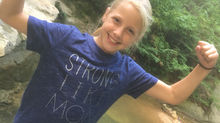Day 2: Building Resilience in Children; Emotion Identification
- #ourbeautifulmess
- Apr 29, 2020
- 3 min read
Updated: Oct 31

Believe it or not, kids experience complex feelings just like adults. They get frustrated, excited, nervous, sad, jealous, frightened, worried, angry and embarrassed.However young kids usually don’t have the vocabulary to talk about how they are feeling. Instead they communicate their feelings in other ways.Kids can express their feelings through facial expressions, through their body, their behavior and play. Sometimes they may act out their feelings in physical, inappropriate or problematic ways.From the moment kids are born, they start learning the emotional skills they need to identify, express and manage their feelings. They learn how to do this through their social interactions and relationships with important people in their lives such as parents, grandparents and carers.Being a parent means you’ve got a really important role to play in helping kids understand their feelings and behaviors. Kids need to be shown how to manage their feelings in positive and constructive ways.
When kids learn to manage their emotions in childhood it leads to positive attitudes and behaviors later in life. Kids who learn healthy ways to express and copy with their feelings are more likely to:
Grow up to be more empathetic and supportive of others
Display less behavioral problems
Perform better in school and later in life in their career
Have more positive and stable relationships
Feel more competent, capable and confident in themselves
Have a positive sense of self worth
Develop resilience and healthy coping mechanisms
How well do your children express or share their feelings with you? Perhaps you should have a family movie night tonight, grab some popcorn, twizzlers and cuddle up on the couch and watch, Pixar’s “Inside Out." If you haven’t seen it, it’s such a cute movie and even us adults can learn a thing or two about understanding and expressing our own emotions. The majority of the movie takes place in the head of an 11 year old girl named Riley, along with five of her emotions; Joy, Sadness, Anger, Fear, and Disgust. These animated emotion characters help Riley learn to understand and express her feelings as well as help navigate her world.
After the movie, grab some paper and crayons and have your child draw what recent feelings they have experienced. Ask them what does that feeling look like? What would it say if it could talk? What does that feeling need to feel better or safe?
If you are looking for some art activities, have your kids draw out the many faces of emotions, such as, what does a grumpy face look like to them? A tired face? A happy face? Draw up to 10 faces and write out the emotion underneath the face. Or, look through magazines for various facial expressions, cut them out, glue them to a piece of paper and have your child identify the "feelings" that they see and label them.
Children who can identify their emotions adjust better to challenges and are able to communicate their needs more effectively.
Find a spot in your home to hang up these faces in an easy-to-see place, like on the refrigerator or on the wall next to your kitchen table. Refer to your “Feeling Faces” throughout the week by setting an example like, “I am feeling sleepy today because I didn’t sleep too well last night. How are you feeling?” or “It makes me sad when you say mean things to me.” If you have young children, you can have the child point to the “Feeling Face” that they are experiencing if they are not ready to verbally label it.
There are many opportunities in everyday life to build children’s emotion knowledge. You cannot prevent your child from feeling negative emotions or being upset. These are an important part of life, but you can help them learn to cope with those emotions. The emotion coaching that you do with them today will strengthen their abilities to deal with emotional challenges much later in life. Here's to raising emotionally strong, resilient kiddos!
xoxo,





























Comments